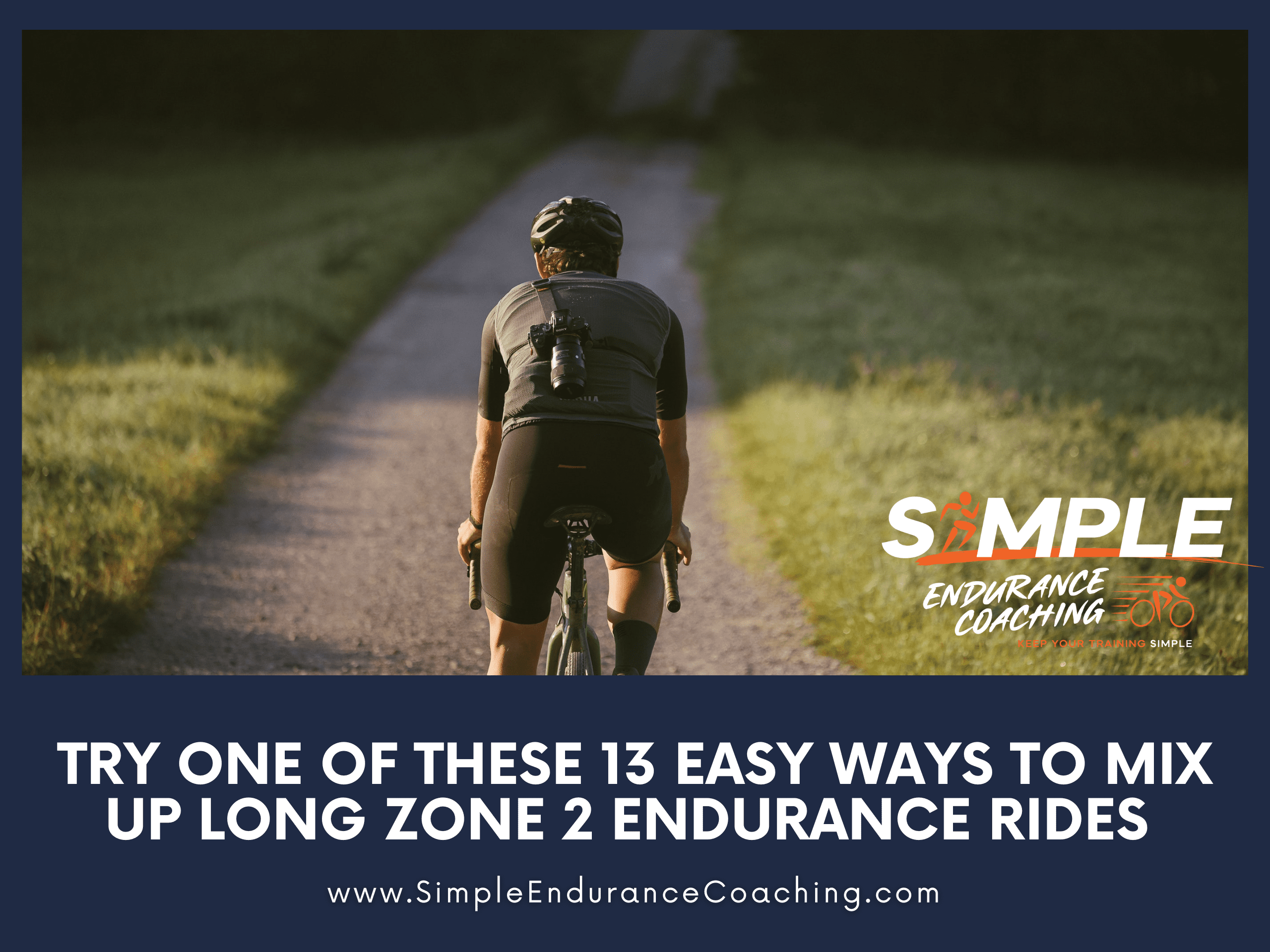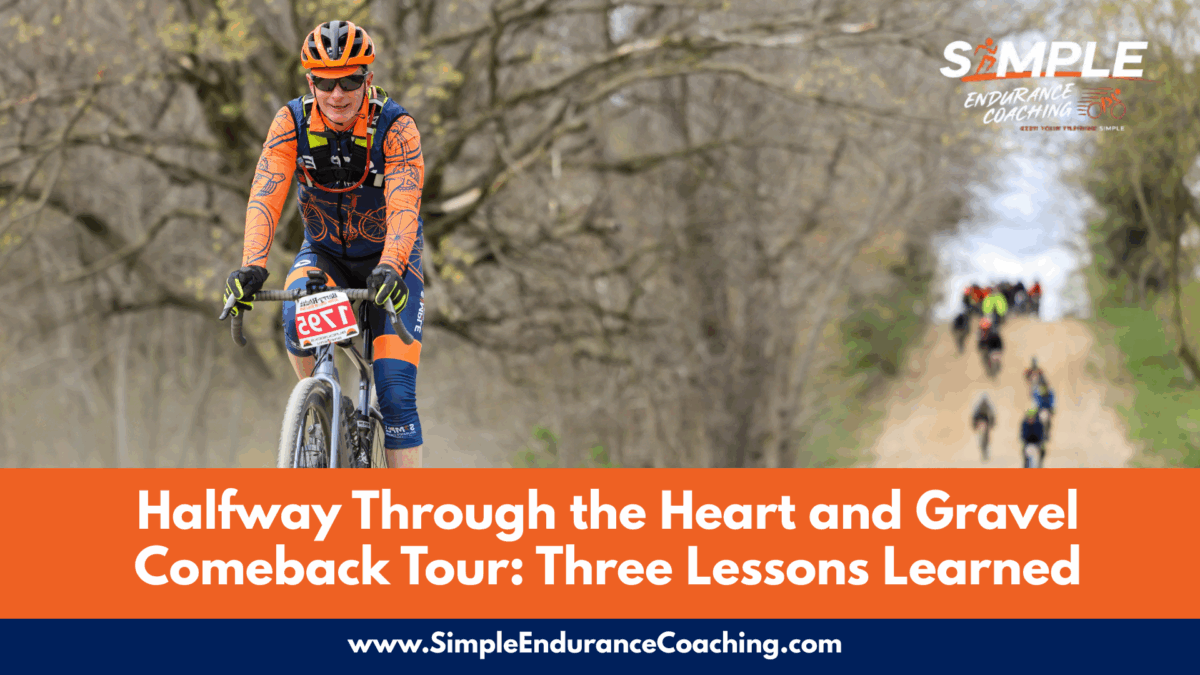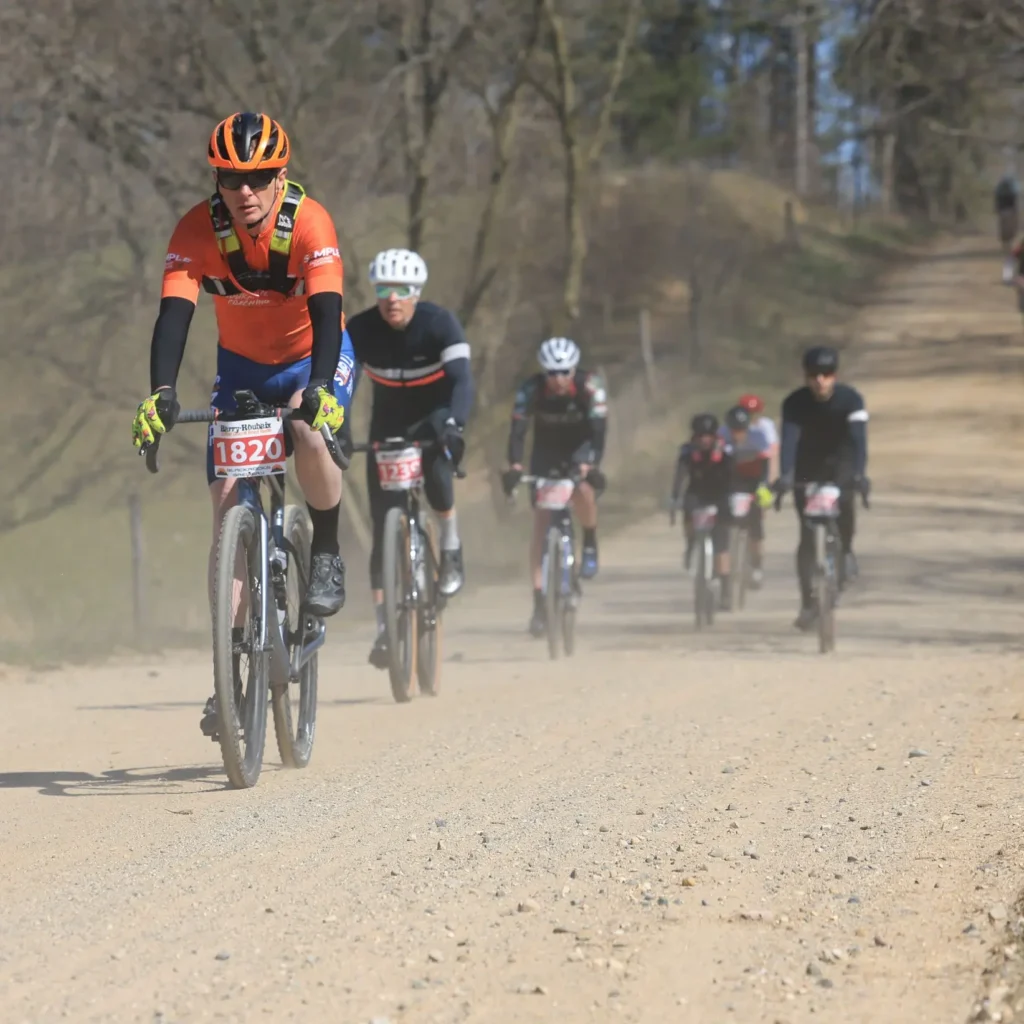Try One of These 13 Easy Ways to Mix Up Long Zone 2 Endurance Rides
I love getting emails from my clients about challenges they’re having with training.
My client wrote me and said Zone 2 rides are boring, they feel like they slow her down, and she would rather chase riders who are faster.
While doing fast group rides can be fun, my client is leaving fitness and speed on the table.
Instead, Zone 2 endurance rides should be the majority (70 to 90 percent, depending on how you keep track)of your training time.
This means going out for two to five hours or more rides at what Kolie Moore calls a “suspiciously” easy pace.
But I haven’t been able to find a way to get my client to do these easy rides consistently for aerobic training.
So we found 13 ways to make Zone 2 rides different to help my client find the joy in them!

Zone 2 ride create adaptations without fatigue
Here’s the main idea of Zone 2 rides: You get a lot of physical adaptations in your cardiovascular system and muscles with slow training WITHOUT much fatigue.
The two main adaptations are mitochondria biogenesis, which means that more mitochondria are created and can therefore produce more energy, and increased fat oxidation, your body’s improved capacity to use essentially limitless supply of fat as fuel.
While it’s true you get more adaptations from higher-intensity work, you also get a lot more fatigue.
The more training time you put in, the more adaptations you get.
But if your training is too hard, you will be too tired to get in the volume you need.
Does that make sense?Volume, in general, equals the most adaptation to build aerobic capacity.
In general, a slow endurance ride means keeping your heart rate under around 130 bpm or less, although some kids I coach can keep theirs under 140.
Generally, zone 2 rides refer to a heart rate zone, although you can also use power.
Just remember that the longer you ride, the more strain on your body will occur: So while your power stays the same, your heart rate will increase (cardiac drift).
That’s why I always recommend using a target heart rate, rather than power for this low-intensity training.
We still need intensity to train for racing
But zone 2 is not all the training you need!
You need to add higher-intensity work to prepare for racing, plus you get different adaptations with hard training, particularly with your muscles.
Since this client loves doing the long mountain bike and gravel races – as in longer than six hours, we need to do a lot of threshold training since that’s the zone she’ll be racing in.
We need to increase her Critical Power level (FTP), improve her VO2max, and then increase the time she can hold her Critical Power (CP).
So in the winter, we would spend time doing seriously hard short interval work to build her VO2max and CP, and then we would spend a long time extending the time she can ride at CP.
Her training would include mostly long duration rides, some high-intensity rides, strength, yoga, and recovery days to improve her aerobic and cardiovascular fitness.
Try one of these 13 ways to spice up your Zone 2 endurance rides
But our reality is that she likes to go fast and hard and doesn’t like to do zone 2 rides.
Since we want the majority of her training time to be in that endurance zone, I need to figure out some ways to spice up her long easy days to make them more enjoyable for her.
Here are 13 different options we can add to her schedule to convince her to do more Zone 2 riding.
- Explore new routes. We get stuck in a rut sometimes of the same routes every day. So try new routes. Maybe a friend or partner can meet you at a restaurant for lunch and bring you home. Or get that person to drop you off. I have often had my wife drop me off on a trip so I’d ride the rest of the way on new roads, and I’d meet her at the destination.
- Ride with others: Riding with a group or finding a training partner can add a social aspect to your rides and make them more enjoyable. It can also provide motivation and accountability, making it easier to stick to your training plan. Make sure the group’s goals align with your training goals! Doing long rides is also a really good time to catch up with friends. Some of the best conversations I’ve ever had have been on long bike rides.
- Set goals or challenges: Give yourself goals or challenges during your rides to keep yourself engaged. For instance, count how many times you breathe through your nose or how long you can keep your HR between 120 and 124 bpm. You can also think about the beverage or snacks you’ll enjoy when you finish!
- Listen to music or podcasts: Listening to music or podcasts can help pass the time and keep your mind occupied during easy endurance rides. Create a playlist or download interesting podcasts that you can listen to while riding. I listen to cycling, some historical, and some cultural podcasts like 99 Percent Invisible and other NPR podcasts. Audiobooks are another good option.
- If you ride inside, get a good playlist on Netflix or bike races on GCN or other sites. Get Bluetooth headphones so you can easily listen. Audiobooks and podcasts are good options indoor as well.
- Incorporate short interval training: While zone 2 training primarily focuses on maintaining a steady effort, incorporating short occasional intervals or bursts of higher intensity can add variety to your rides. This can help break up the monotony and provide a mental and physical challenge. For example, do five to eight-second sprints every five minutes or so.
- Find some short Strava segments somewhere in your ride and get your best times for those segments in the middle of a longer ride. But keep the segments short – less than 30 seconds if possible – so you keep the majority of your ride in the easy HR zone.
- If you’re riding inside on Zwift, you can join a Pacer group that will keep your HR low. Zwift has D, C, B, and A groups that are always led by bots who ride at a steady pace the whole time. Match the ride to your fitness and HR levels.
- Plan rest stops or mid-ride activities: Break up your rides by planning rest stops at interesting locations, such as parks, cafes, or scenic spots. This allows you to take a break, hydrate, and enjoy the surroundings before continuing your ride. Plus you find places with really good snacks! Mama D’s in Wales is a destination because of the coffee and tasty baked goods
- Change up your cadence by riding at a low cadence for part of the time and a high cadence for other times. Another option is to do high-cadence spin-ups for a few seconds every five minutes. Also, you could ride in a low cadence for small chunks of time followed by some high-cadence spin-ups every few minutes.
- Ride to work – the long way. Several of my clients ride their bicycles to work which is great for adding mileage. You have to get to work regardless and if you use that time on your bike, it’s a bonus! Then on several days a week, you can use one of those rides as a long ride by taking a different way home, for example.
- While my client won’t like this one, some people like the long rides simply to clear their heads and NOT DO ANYTHING but look around and, in a way, meditate on the bike. I can’t do this either, but choosing to just pedal and observe the world around you is a choice many people enjoy, especially if they lead busy lives. Long bike rides are one of the few times their life is quiet!
- Watch the ride map on your Garmin or other head unit to learn the roads of the area you’re riding in. Make note of landmarks or historical markers. Take pictures of them. I once did a ride to explore the history of the Flambeau Flowage in northern Wisconsin, where I learned that thousands of acres of land lived on by Chippewa indigenous people were flooded to make recreational lakes.
Here are three things to know about how to spice up endurance rides
- Zone 2 refers to your heart rate where you ride at a pace that is easy, you can talk easily, and you could breath from your nose.
- A majority of your total training time should be done in a zone 2 heart rate.
- Come up with creative ways to make your easy endurance rides more interesting if you need more motivation.
Need more?
Get a free Core Strength and Stability training video when you opt-in to receive my weekly blog posts about what works in endurance sports.
Sign up for Virtual Coffee so we can discuss your goals, ask questions, and talk about making your endurance training more effective, fun, and Simple.
Paul Warloski is a:
- USA Cycling Level 2 Coach
- RRCA Running Coach
- Training Peaks Level 2 Coach
- RYT-200 Yoga Instructor
- Certified Personal Trainer





